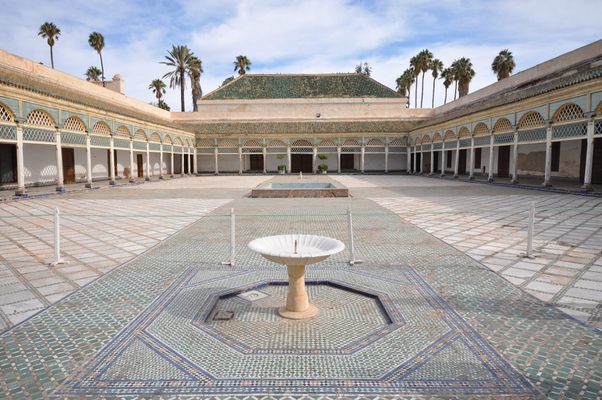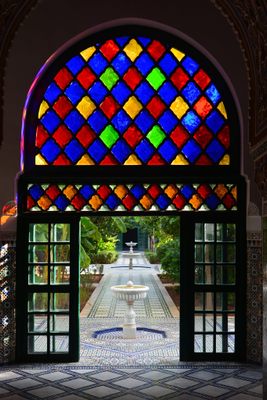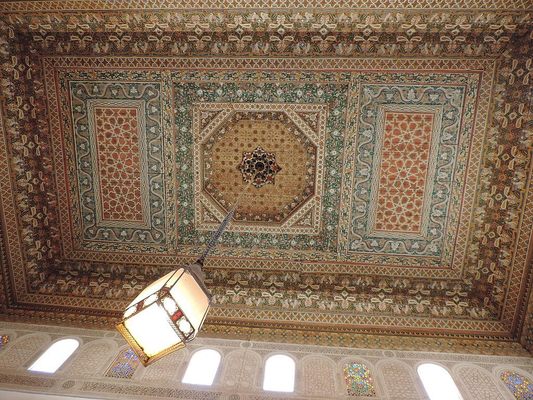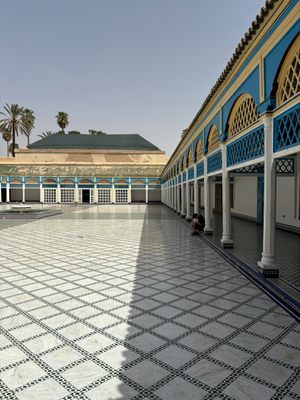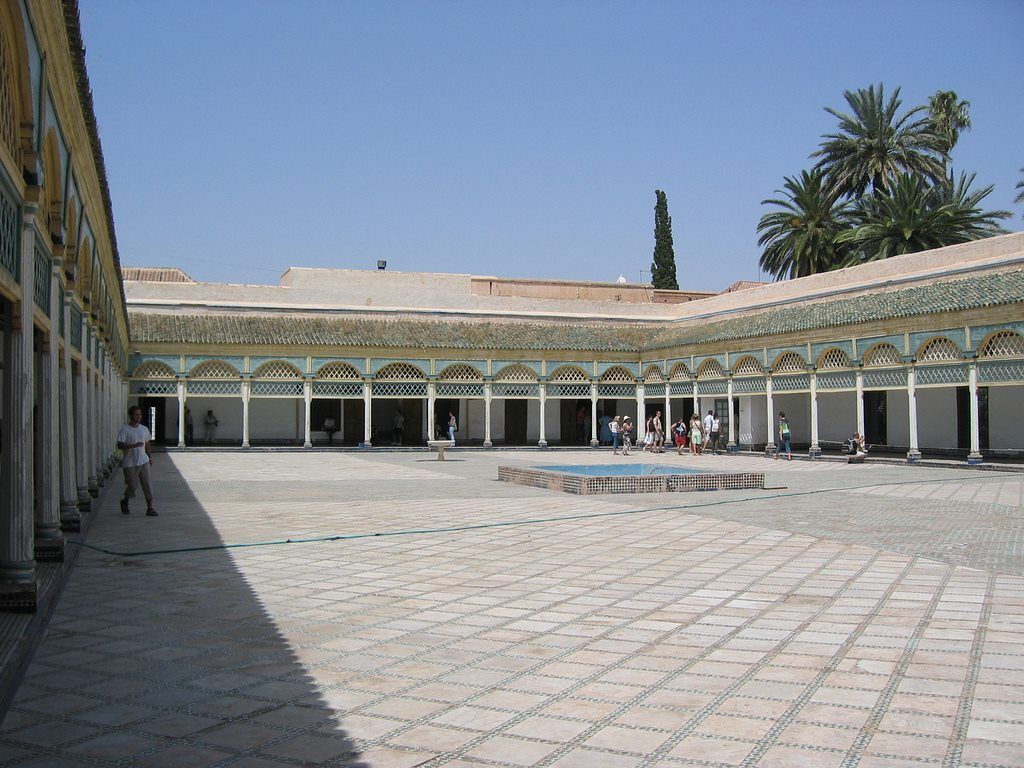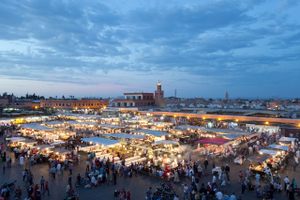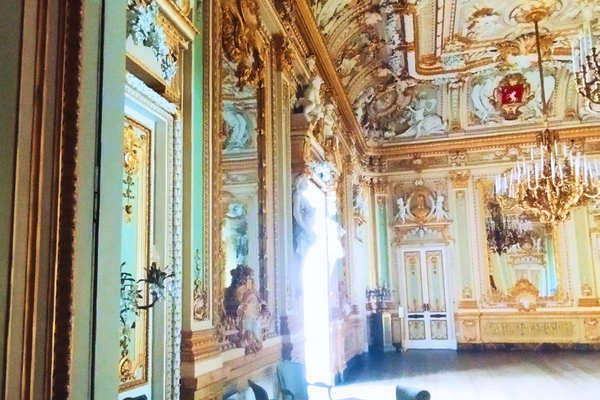About
Built by grand viziers to be the greatest palace of its time, Bahia Palace was later looted by the Sultan and then occupied by the French. The vast palace still sometimes hosts the Moroccan royal family, but is more typically frequented by tourists who come to marvel at the fine architecture and intricate decorations.
Bahia Palace was built in the 1860s by Si Moussa, the powerful Grand Vizier of Sultan Hassan I of Morocco. His intention was to build the greatest palace of its time, a lofty goal that only began to come close to fruition when his son took control of the palace in 1894.
Si Moussa’s son, Ahmed ben Moussa (also known as Ba Ahmed), was even more powerful than his father, serving as Grand Vizier and as regent of Morocco during the reign of the child Sultan Abd al-Aziz. He expanded upon the existing palace, bringing in the renowned architect Mohammed al-Makki and some of the finest craftsmen in the country to create the palace we see today. He also built rooms to house his four wives and 24 concubines.
Ahmed ben Moussa died in 1900 and the palace was looted en masse. His concubines swiftly took their share before Sultan Abd al-Aziz (the former child Sultan) arrived, carting off as much as possible to his own palace. By looting standards, it was all fairly civilized, and the palace itself was undamaged.
Soon after, Bahia Palace was occupied by Thami El Glaoui, a warlord who served as the Pasha of Marrakesh from 1912 to 1956. El Glaoui was an ally of the French protectorate in Morocco, and often hosted the increasingly powerful Europeans at the palace. The French were mightily impressed—a little too much so for El Glaoui. They kicked him out in 1911 and promptly installed the protectorate’s resident-general and some of his officers.
Despite all the comings and goings, Bahia Palace remains remarkably well preserved and largely the same as it was during the time of Ahmed ben Moussa. Minus, of course, all his furniture and other removable trappings, which were thoroughly looted and have never been replaced; visitors today will find most of the rooms empty.
But this lack of furnishings doesn’t detract from the splendor of the palace. Spread over 20 acres with gardens, courtyards and 150 rooms (only some of which are accessible to the public), the palace impresses thanks to its magnificent decorations, among the finest examples of Andalusian and Moorish architecture in Morocco.
The rooms for wives and concubines have carved-cedar ceilings; salons are lined by stained-glass windows; reception halls dazzle with their zellige tile mosaics in geometric patterns and delicate stuccoworks. The palace harem is decorated with woven-silk panels and more stained-glass windows, while the huge Grand Courtyard is a sight to see with its marble-tiled surface stretching out between the carved wooden galleries.
All this finery certainly impressed one notable visitor, the American novelist Edith Wharton, who stayed at the palace during the Protectorate years: “They came, they built the Bahia, and it remains the loveliest and most fantastic of Moroccan palaces.”
Related Tags
Know Before You Go
Bahia Palace is located along Rue Riad Zitoun El Jedid, southeast of the Medina and close to the Mellah. The palace is open daily from 9 a.m. to 5 p.m. (may be subject to changes or closures during royal visits and other events). The entrance fee is 10 Moroccan dirhams, or about $1 US.
Flavors of Morocco: Souks, Spices & Saharan Stars
A Moroccan Culinary Adventure from Marrakech to Essaouira.
Book NowCommunity Contributors
Added By
Published
November 20, 2018
Sources
- https://travelguide-marrakech.com/bahia-palace/
- https://www.alksar.com/en/2018/05/30/bahia-palace-marrakech/
- http://www.palais-bahia.com/en/historical/
- https://theculturetrip.com/africa/morocco/articles/history-of-bahia-palace-in-marrakech-in-1-minute/
- https://www.lonelyplanet.com/morocco/marrakesh/attractions/bahia-palace/a/poi-sig/1404426/1316370
- https://books.google.com.pe/books?id=OSxHDwAAQBAJ&pg=PT92&dq=Si+Moussa+vizier+slave&hl=en&sa=X&ved=0ahUKEwi1gKeZ3-DeAhXlpVkKHWNNDxAQ6AEIJzAA#v=onepage&q=Si%20Moussa%20vizier%20slave&f=false
- https://books.google.com.pe/books?id=WfjdCwAAQBAJ&pg=PT113&lpg=PT113&dq=%E2%80%9CThey+came,+they+built+the+Bahia,+and+it+remains+the+loveliest+and+most+fantastic+of+Moroccan+palaces.%22&source=bl&ots=ZfbNJqNVax&sig=v3uIQj4cWLppR5bomtWj5zZGfYk&hl=en&sa=X&ved=2ahUKEwjxxLW52ODeAhWluFkKHSqxAeMQ6AEwAHoECAgQAQ#v=onepage&q=%E2%80%9CThey%20came%2C%20they%20built%20the%20Bahia%2C%20and%20it%20remains%20the%20loveliest%20and%20most%20fantastic%20of%20Moroccan%20palaces.%22&f=false
